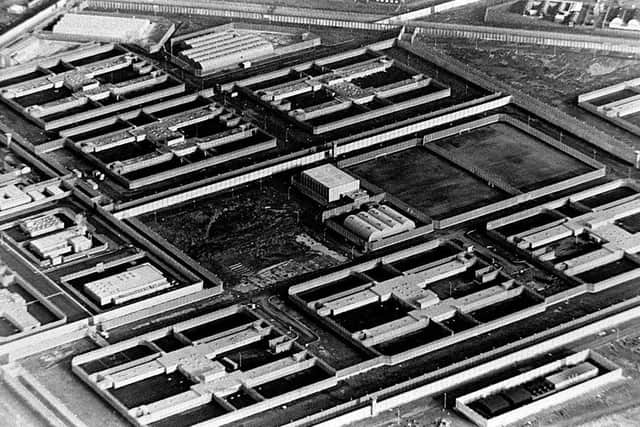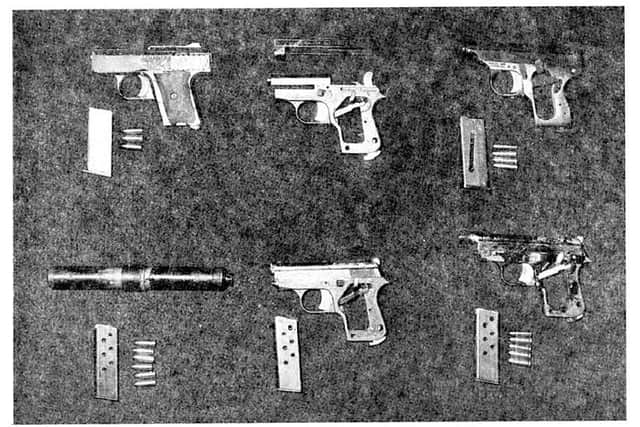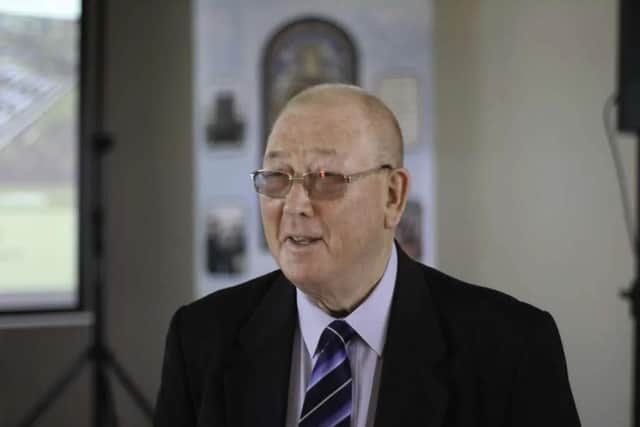Maze prison break 40th anniversary: Ex-jail boss derides IRA mythology around 'heroic Long Kesh escape'
and live on Freeview channel 276
Tom Murtagh told the News Letter that “there was a much more serious effect on those involved than most people realise”, going well beyond just the men who were directly wounded by the IRA escapees.
The event was the biggest prison break in the history of the modern British Isles, and its anniversary falls this Monday.
Advertisement
Hide AdAdvertisement
Hide AdOn that date, some 38 IRA conspirators tried to stab and shoot their way out of the jail in an event recorded in republican lore as "the great escape", with 35 making it outside.


In the course of the melee, five prison officers were stabbed and two were shot, with one of those stabbing victims – Jim Ferris, a 43-year-old father of two – dying soon afterwards.
A report commissioned by the UK parliament into the escape found that Gerry Kelly, current Sinn Fein MLA for North Belfast, had shot a guard non-fatally in the head, while Dermot Finucane, brother of Pat Finucane and uncle of current North Belfast MP John, was behind the stabbing of three of the guards.
"The stories of the 'heroic escape' often fail to mention that there were a lot of guns around against unarmed staff,” Mr Murtagh, who was assistant governor of the Maze from 1973 to 1977 and its deputy governor during 1987.
Advertisement
Hide AdAdvertisement
Hide Ad"The success of the escape was totally effected by the presence of firearms against unarmed people."


Prison guards, who had been armed only with batons, had pillowcases put over their heads.
In the towers above the prison were soldiers with rifles – but they were reluctant to use them because many of the escapees were dressed as guards and it was hard to tell who was who.
Mr Murtagh had been the governor of Armagh jail at the time of the breakout, and went on to research the incident for his book ‘The Maze Prison: A Hidden Story of Chaos, Anarchy and Politics’.
Too much latitude had been given to the prisoners, he said.
Advertisement
Hide AdAdvertisement
Hide Ad

"It was a spectacular failing of government, who created a situation that allowed it to happen.
"Basically what happened is [during] the hunger strike the government decided they would not give in to their demands.
"But as soon as the hunger strike was over, they immediately conceded to their demands.
"When the government had conceded certain privileges to them, they started manipulating the situation… [so that] the leadership of the IRA could control basically what was happening in the wings that they were in.”
Advertisement
Hide AdAdvertisement
Hide AdIt was put to Mr Murtagh that republicans claim their prisoners were brutalised by the prison regime.
"I'm familiar with that narrative," he said.
"But the point is that they were accommodated in units of 25 – sometimes there might be a bit more in there – operating in concert as a paramilitary group.
"There'd be invariably no more than three staff, and sometimes less than that, with nothing to defend themselves with.
"The circumstances do not support the thesis that the staff were brutalising them."
Advertisement
Hide AdAdvertisement
Hide AdHe said that a common tactic of prisoners was to make claims that contained "an element of truth" – such as the fact they were being routinely searched – and then to exaggerate that into something that was "completely false" (like the idea that these searches amounted to systematic "assault" or "torture" for example).
The government inquiry into the fiasco was conducted by James Hennessy, the chief prison inspector of the UK, and its findings published four months after the escape.
Its report said that Jim Ferris had been stabbed three times but still managed to run towards the prison gate in an attempt to raise the alarm whilst being chased down by Finucane.
Before he made it to the gate, officer Ferris collapsed. He was later found to have suffered a heart attack.
Advertisement
Hide AdAdvertisement
Hide AdThe report said that as well as the seven men stabbed and shot, another "13 were kicked about and beaten, and 42 were subsequently off work with nervous disorders".
Gerry Kelly had been in the Maze serving two life sentences at the time for carrying out bombings at the time, while Finucane had been serving an 18 year sentence for having two assault rifles: an AR15 and an M16.
Ten years ago, Mr Kelly had drawn criticism for tweeting out: “Happy 30th anniversary of the Great Escape 1983 from Long Kesh H Blocks to all those involved.”
In an interview with David McKittrick in The Irish Independent that year, he was asked about the guard who was shot in the head.
Advertisement
Hide AdAdvertisement
Hide AdMr Kelly was reported as saying: “There were two shots fired. There was myself and others there, so clearly it was a prisoner who shot him. But that is as far as I will go.”
The report into the escape 40 years ago found that the guards faced "a singularly difficult and dangerous task" because the inmates retained "their paramilitary structure and allegiances even when inside" and could "call on the help of their associates and supporters in the local community" for the purposes of intimidation.
Here is what it says about Kelly's role in the shooting specifically: "Kelly, at the doorway of the communications room, pointed a gun through the locked grille and ordered Officer X to unlock it and lie on the floor…
"Lying on the floor of the communications room, [a guard] surreptitiously raised himself up in an attempt to reach his stave when he thought Kelly's attention had been diverted.
Advertisement
Hide AdAdvertisement
Hide Ad"Before he could do so Kelly fired two shots at him: he collapsed on the floor with a bullet through the head…
"Officer X and [a prison orderly] were taken back to the lorry.
"The driver's left foot was tied to the clutch and his door lock was jammed.
"From beneath his seat a cord was attached to what he was told was a hand grenade - in fact it was tied to the frame of the seat.
Advertisement
Hide AdAdvertisement
Hide Ad"Kelly, in officer's uniform, lay on the floor of the cab on the passenger side and trained his gun on Officer X.
"Thirty-seven prisoners then climbed into the back of the lorry, the shutter was lowered and the vehicle drove off."
As for Finucane's role, the report says: "Officer Ferris, chased by Finucane, ran from the gate lodge shouting to the officer at the pedestrian gate to secure it and sound the alarm.
"He had been stabbed three times in the chest. Before he was able to reach the gate, he collapsed and later died.
Advertisement
Hide AdAdvertisement
Hide Ad"Finucane continued on to the pedestrian gate where he stabbed two officers who had just entered the prison.
"Officer X, the officer on gate duty, had no time to sound the alarm or secure the gate before he too was stabbed."